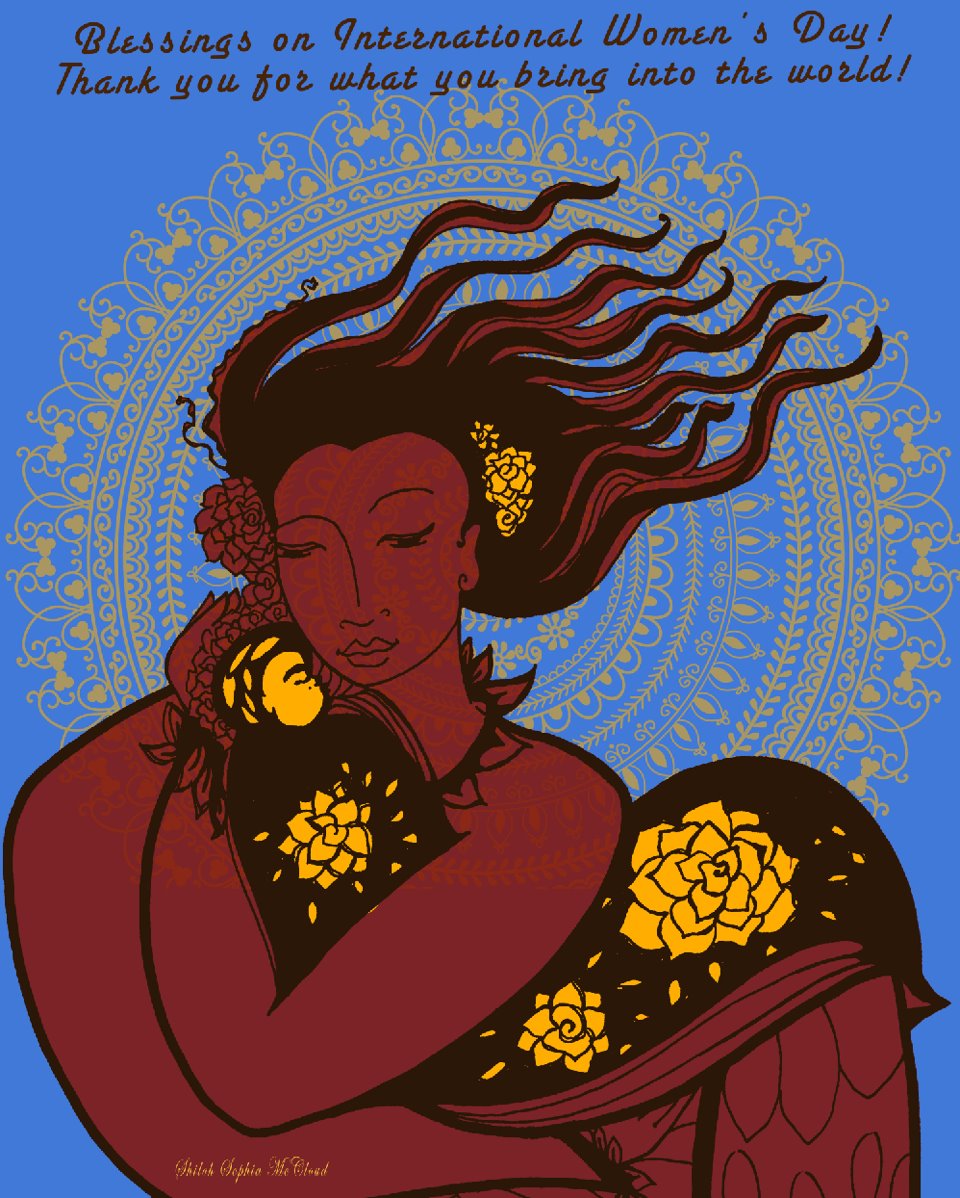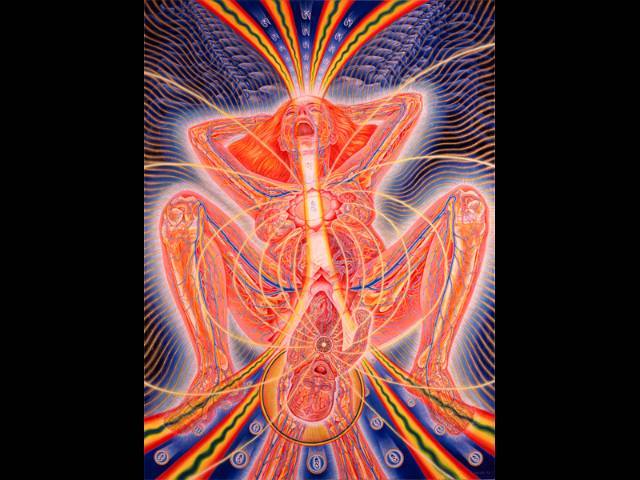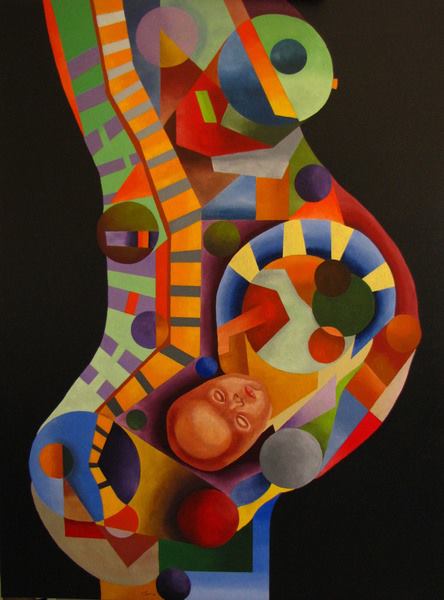Blog
The irregular spiral galaxy NGC 5486 hangs against a background of dim, distant galaxies in this image from the NASA/ESA Hubble Space Telescope. The tenuous disc of the galaxy is threaded through with pink wisps of star formation, which stand out from the diffuse glow of the galaxy’s bright core. While this particular galaxy has indistinct, meandering spiral arms it lies close to the much larger Pinwheel Galaxy, one of the best known examples of ‘grand design’ spiral galaxies with prominent and well-defined spiral arms. In 2006 Hubble captured an image of the Pinwheel Galaxy which was — at the time — the largest and most detailed photo of a spiral galaxy ever taken with Hubble. NGC 5486 lies 110 million light-years from Earth in the constellation Ursa Major. Constellations are not only patterns of bright stars, but also a system that astronomers use to divide the sky into regions. There are 88 of these regions, and each has an associated constellation depicting a mythological figure, an animal, or even an item of scientific equipment. This strange celestial menagerie contains everything from Ursa Major’s great bear to a toucan, a sea monster, a telescope, and even a painter’s easel! This observation comes from a selection of Hubble images exploring the detritus left behind by Type II supernovae. As massive stars reach the end of their lives they cast off huge amounts of gas and dust before ending their lives in titanic supernova explosions. NGC 5486 hosted a supernova in 2004, and astronomers used the keen vision of Hubble’s Advanced Camera for Surveys to explore the aftermath in the hopes of learning more about these explosive events. [Image description: A spiral galaxy. It is irregularly-shaped and its spiral arms are difficult to distinguish. The edges are faint and the core has a pale glow. It is dotted with small, wispy, pink regions where stars are forming. A few stars and small galaxies in warm colours are visible around it.] Link Hubble spies.

Ustad Zakir Hussain (born 9 March 1951) is an Indian tabla player, composer, percussionist, music producer and film actor. He is the eldest son of tabla player Alla Rakha.
He was awarded the Padma Shri in 1988, the Padma Bhushan in 2002, and the Padma Vibhushan in 2023, by the Government of India. He was also awarded the Govt of India’s Sangeet Natak Akademi Award in 1990, Fellowship of the Sangeet Natak Akademi Fellowship, Ratna Sadsya in 2018. In 1999, he was awarded the United States National Endowment for the Arts‘ National Heritage Fellowship, the highest award given to traditional artists and musicians.
Hussain attended St. Michael’s High School in Mahim, and was graduated from the St. Xavier’s College, Mumbai.
more...Lloyd Price (March 9, 1933 – May 3, 2021) was an American singer-songwriter, record executive and bandleader, known as “Mr. Personality”, after his 1959 million-selling hit, “Personality“. His first recording, “Lawdy Miss Clawdy“, was a hit for Specialty Records in 1952. He continued to release records, but none were as popular until several years later, when he refined the New Orleans beat and achieved a series of national hits. He was inducted into the Rock and Roll Hall of Fame in 1998.
Price was born on March 9, 1933, in Kenner, Louisiana, a suburb of New Orleans, and raised in Kenner.His mother, Beatrice Price, owned the Fish ‘n’ Fry Restaurant. Price picked up lifelong interests in business and food from her. He and his younger brother Leo were both musical.
more...Dorothy Jacqueline Keely (March 9, 1928 – December 16, 2017), professionally known as Keely Smith, was an American jazz and popular music singer, who performed and recorded extensively in the 1950s with then-husband Louis Prima, and throughout the 1960s as a solo artist.
Smith married Prima in 1953. The couple were stars throughout the entertainment business, including stage, television, motion pictures, hit records, and cabaret acts. They won a Grammy in 1959, its inaugural year, for their smash hit, “That Old Black Magic”, which remained on the charts for 18 weeks.
Smith was born in Norfolk, Virginia; her ancestry was Irish and Cherokee. Jesse Smith, her stepfather, was a carpenter, and her mother took in laundry to earn money to buy gowns for Smith to wear when she performed.
more...Randolph Denard Ornette Coleman (March 9, 1930 – June 11, 2015) was an American jazz saxophonist, trumpeter, violinist, and composer. He was best known as a principal founder of the free jazz genre, a term derived from his 1960 album Free Jazz: A Collective Improvisation. His pioneering works often abandoned the harmony-based composition, tonality, chord changes, and fixed rhythm found in earlier jazz idioms.Instead, Coleman emphasized an experimental approach to improvisation, rooted in ensemble playing and blues phrasing. AllMusic called him “one of the most beloved and polarizing figures in jazz history,” noting that while “now celebrated as a fearless innovator and a genius, he was initially regarded by peers and critics as rebellious, disruptive, and even a fraud.”
Born and raised in Fort Worth, Texas, Coleman taught himself to play the saxophone when he was a teenager. He began his musical career playing in local R&B and bebop groups, and eventually formed his own group in Los Angeles featuring members such as Ed Blackwell, Don Cherry, Charlie Haden, and Billy Higgins. In November 1959, his quartet began a controversial residency at the Five Spot jazz club in New York City and he released the influential album The Shape of Jazz to Come, his debut LP on Atlantic Records. Coleman’s subsequent Atlantic releases in the early 1960s would profoundly influence the direction of jazz in that decade, and his compositions “Lonely Woman” and “Broadway Blues” became genre standards that are cited as important early works in free jazz.
In the mid 1960s, Coleman left Atlantic for labels such as Blue Note and Columbia Records, and began performing with his young son Denardo Coleman on drums. He explored symphonic compositions with his 1972 album Skies of America, featuring the London Symphony Orchestra. In the mid-1970s, he formed the group Prime Time and explored electric jazz-funk and his concept of harmolodic music. In 1995, Coleman and his son Denardo founded the Harmolodic record label. His 2006 album Sound Grammar received the Pulitzer Prize for Music, making Coleman the second jazz musician ever to receive the honor.
Coleman was born on March 9, 1930, in Fort Worth, Texas, where he was raised.
more...Messier 74 (also known as NGC 628 and Phantom Galaxy) is a large spiral galaxy in the equatorial constellation Pisces. It is about 32 million light-years away from Earth. The galaxy contains two clearly defined spiral arms and is therefore used as an archetypal example of a grand design spiral galaxy. It is a galaxy with low surface brightness. Its relatively large angular (that is, apparent) size and the galaxy’s face-on orientation make it an ideal object for professional astronomers who want to study spiral arm structure and spiral density waves. It is estimated that M74 hosts about 100 billion stars.
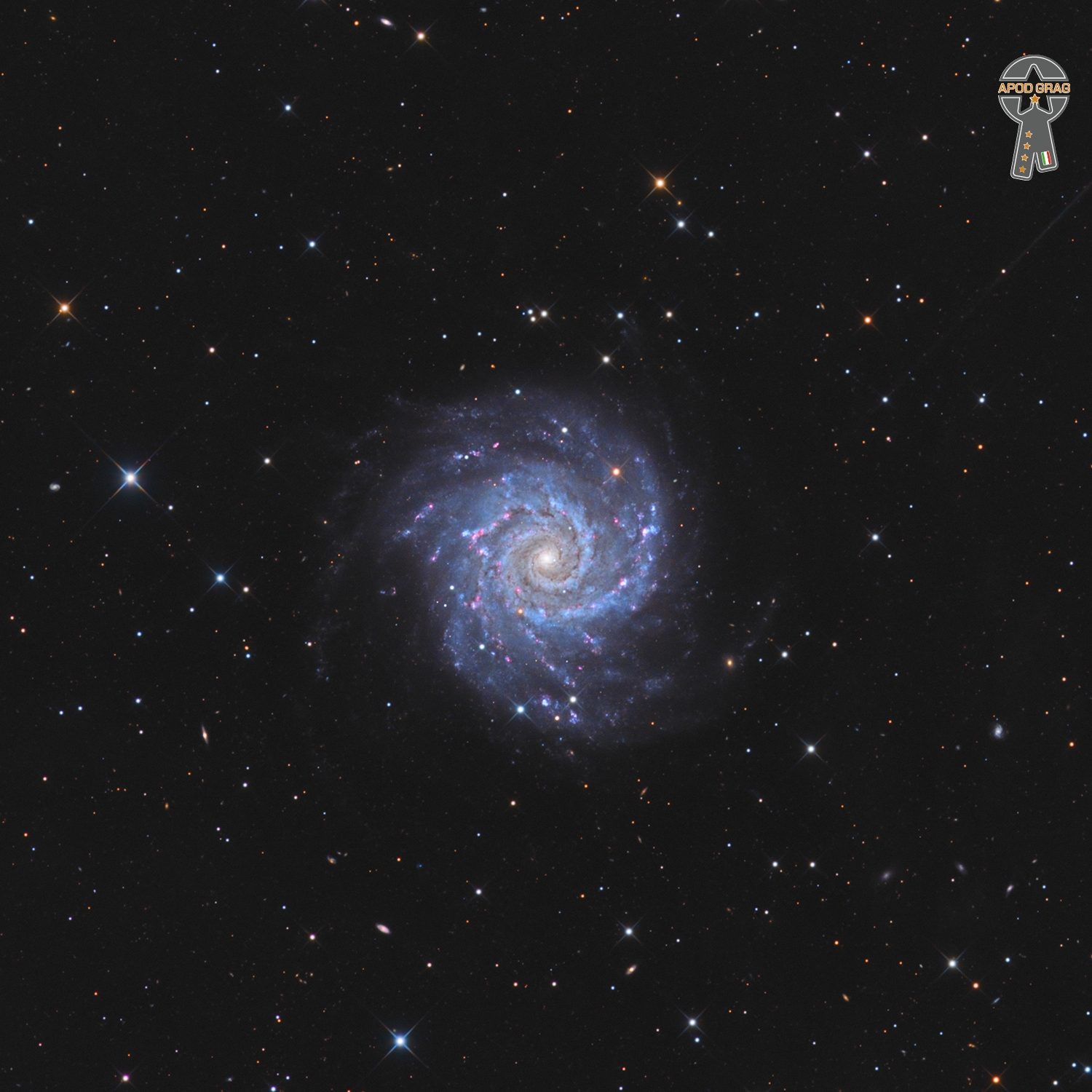
Gábor István Szabó (March 8, 1936 – February 26, 1982) was a Hungarian American guitarist whose style incorporated jazz, pop, rock, and Hungarian music.
Szabó was born in Budapest, Hungary. He began playing guitar at the age of 14. In the aftermath of the Hungarian revolution of 1956, he moved to California and later attended the Berklee College of Music in Boston between 1958 and 1960.
In 1961, Szabó became member of a quintet that was led by Chico Hamilton and included Charles Lloyd, playing what has been described as chamber jazz, with “a moderate avant-gardism.
more...George Edward Coleman (born March 8, 1935) is an American jazz saxophonist known for his work with Miles Davis and Herbie Hancock in the 1960s. In 2015, he was named an NEA Jazz Master.
Coleman was born in Memphis, Tennessee. He was taught how to play the alto saxophone in his teens by his older brother Lucian Adams, inspired (like many jazz musicians of his generation) by Charlie Parker. Among his schoolmates were Harold Mabern, Booker Little, Frank Strozier, Hank Crawford, and Charles Lloyd. After working with Ray Charles, Coleman started working with B.B. King in 1953, at which point he switched to tenor saxophone. In 1956 Coleman moved to Chicago, along with Booker Little, where he worked with Gene Ammons and Johnny Griffin before joining Max Roach‘s quintet (1958–1959). Coleman recorded with organist Jimmy Smith on his album House Party (1957), along with Lee Morgan, Curtis Fuller, Kenny Burrell, and Donald Bailey. Moving to New York City with Max Roach in that year, he went on to play with Slide Hampton (1959–1962).
more...Richard George Fariña (March 8, 1937 – April 30, 1966) was an American folksinger, songwriter, poet and novelist.
Fariña was born in Brooklyn, New York, United States, the son of an Irish mother, Theresa Crozier, and a Cuban father of Galician origin, also named Richard Fariña. He grew up in the Flatbush neighborhood of Brooklyn and attended Brooklyn Technical High School. He earned an academic scholarship to Cornell University, starting as an engineering major, but later switching to English. While at Cornell he published short stories for local literary magazines and for national periodicals, including Transatlantic Review and Mademoiselle. Fariña became good friends with Thomas Pynchon, David Shetzline, and Peter Yarrowwhile at Cornell. He was suspended for alleged participation in a student demonstration against campus regulations, and although he later resumed his status as a student, he dropped out in 1959, just before graduation.
On returning to Manhattan, Fariña became a regular patron of the White Horse Tavern, the well-known Greenwich Village tavern frequented by poets, artists, and folksingers, where he befriended Tommy Makem. It was there that he met Carolyn Hester, a successful folk singer. They married 18 days later. Fariña appointed himself Hester’s agent; they toured worldwide while Fariña worked on his novel and Carolyn performed gigs. April 30th 1966 Fariña saw a guest with a motorcycle, who later gave Fariña a ride up Carmel Valley Road, heading east toward the rural Cachagua area of Carmel Valley.At an S-turn the driver lost control. The motorcycle tipped over on the right side of the road, came back to the other side, and tore through a barbed wire fence into a field where a small vineyard now exists. The driver survived, but Fariña was killed instantly.
more...John Smith Hurt (March 8, 1893 – November 2, 1966), better known as Mississippi John Hurt, was an American country blues singer and guitarist.
Raised in Avalon, Mississippi, Hurt taught himself to play the guitar around the age of nine. He worked as a sharecropper and began playing at dances and parties, singing to a melodious fingerpickedaccompaniment. His first recordings, made for Okeh Records in 1928, were commercial failures, and he continued to work as a farmer.
Dick Spottswood and Tom Hoskins, a blues enthusiast, located Hurt in 1963 and persuaded him to move to Washington, D.C. He was recorded by the Library of Congress in 1964. This helped further the American folk music revival, which led to the rediscovery of many other bluesmen of Hurt’s era. Hurt performed on the university and coffeehouse concert circuit with other Delta blues musicians who were brought out of retirement. He also recorded several albums for Vanguard Records.
Hurt returned to Grenada in 1966, where he died at the age of 73.
Material recorded by him has been re-released by many record labels. His songs have been recorded by Bob Dylan, Dave Van Ronk, Jerry Garcia, Beck, Doc Watson, John McCutcheon, Taj Mahal, Bruce Cockburn, David Johansen, Bill Morrissey, Gillian Welch, The Be Good Tanyas, Josh Ritter, Chris Smither, Guthrie Thomas, Parsonsfield, and Rory Block.
Hurt was born in Teoc, Carroll County, Mississippi, and raised in Avalon, Mississippi. He taught himself to play guitar at the age of nine, stealthily playing the guitar of William Henry Carson, a friend of his mother Mary Jane’s, who often stayed at the Hurt home while courting a woman who lived nearby. As a youth, he played old-time music for friends and at dances. He worked as a farmhand and sharecropper into the 1920s.
more...the Large Magellanic Cloud (LMC), the largest satellite galaxy of our own Milky Way Galaxy. The LMC is classified as a dwarf irregular galaxy because of its normally chaotic appearance. In this deep and wide exposure, however, the full extent of the LMC becomes visible. Surprisingly, during longer exposures, the LMC begins to resemble a barred spiral galaxy. The Large Magellanic Cloud lies only about 180,000 light-years distant towards the constellation of the Dolphinfish (Dorado). Spanning about 15,000 light-years, the LMC was the site of SN1987A, the brightest and closest supernova in modern times. Together with the Small Magellanic Cloud (SMC), the LMC can be seen in Earth’s southern hemisphere with the unaided eye.
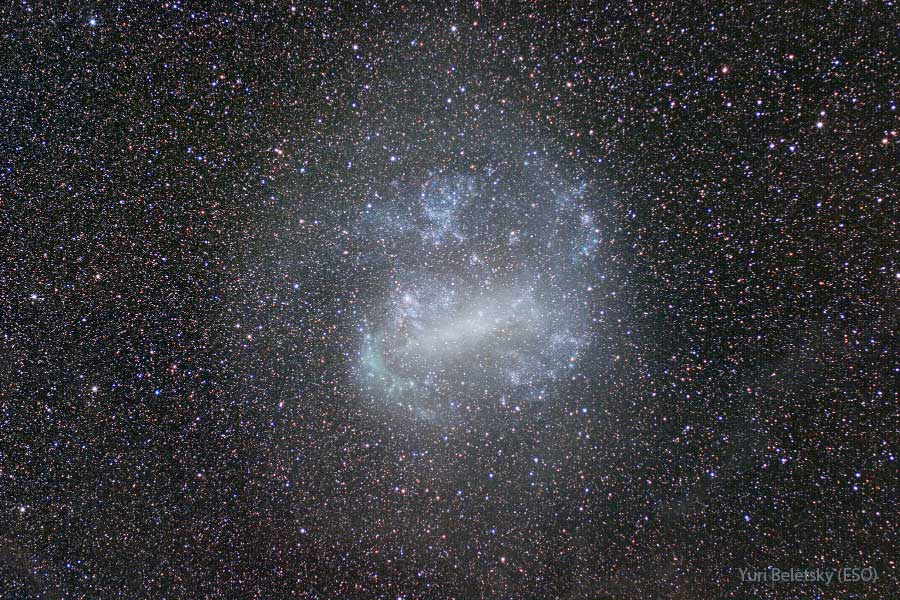
Christopher Taylor White (born 7 March 1943) is an English musician.
White’s music career spans more than 50 years. He came to prominence in the mid-1960s as the bass guitarist and occasional lead vocalist of the English rock band The Zombies. White is one of the main composers of the Zombies’ music, and made major lyrical contributions to the band’s songs. He was inducted into the Rock and Roll Hall of Fame in 2019 as a member of the Zombies.
more...
Louis Albert Cottrell Jr. (March 7, 1911 – March 21, 1978) was a Louisiana Creole jazz clarinetist and tenor saxophonist. He was the son of the influential drummer Louis Cottrell, Sr., and grandfather of New Orleans jazz drummer Louis Cottrell III. As leader of the Heritage Hall Jazz Band, he performed at Carnegie Hall in 1974.
Cottrell was born into an upper-class Creole musical family in New Orleans. His father, Louis “Old Man” Cottrell, Sr., was a famed drummer, and cornetist Manny Perez was his godfather. The young Cottrell grew up around such great musicians as Barney Bigard, John Robichaux, and A.J. Piron. Cottrell studied clarinet under Lorenzo Tio Jr. and Bigard. He began his career in the 1920s with the Golden Rule Orchestra, and then in 1925 played with Paul “Polo” Barnes.
more...Alcide Louis “Slow Drag” Pavageau (March 7, 1888 – January 19, 1969) was an American jazz guitarist and double-bassist.
Pavageau was born in New Orleans, Louisiana. He started his career as a dancer, mastering a dance called the Slow Drag which resulted in his nickname. He learned the guitar as a young man from his cousin Ulysses Picou, a singer in New Orleans. Pavageau came from a musical family and was related to families like the Tios, Picous and Pirons who formed some of the earliest jazz bands. He played Buddy Petit, Bunk Johnson, and Herb Morand. Johnson bragged that he taught Louis Armstrong how to play cornet by ear. He started playing bass in 1927 when he was 39 years old and joined George Lewis‘s band from 1943 and also played in Bunk Johnson‘s band in New York City in 1945. He toured with Lewis through the end of the 1950s. In 1961, while playing with the Louis Cottrell Trio, he recorded New Orleans: The Living Legends for Riverside. He worked at Preservation Hall in the 1960s and recorded one album as a leader in 1965 in addition to frequent recording with Lewis.
more...Joseph Maurice Ravel (7 March 1875 – 28 December 1937) was a French composer, pianist and conductor. He is often associated with Impressionism along with his elder contemporary Claude Debussy, although both composers rejected the term. In the 1920s and 1930s Ravel was internationally regarded as France’s greatest living composer.
Born to a music-loving family, Ravel attended France’s premier music college, the Paris Conservatoire; he was not well regarded by its conservative establishment, whose biased treatment of him caused a scandal. After leaving the conservatoire, Ravel found his own way as a composer, developing a style of great clarity and incorporating elements of modernism, baroque, neoclassicism and, in his later works, jazz. He liked to experiment with musical form, as in his best-known work, Boléro (1928), in which repetition takes the place of development. Renowned for his abilities in orchestration, Ravel made some orchestral arrangements of other composers’ piano music, of which his 1922 version of Mussorgsky‘s Pictures at an Exhibition is the best known.
A slow and painstaking worker, Ravel composed fewer pieces than many of his contemporaries. Among his works to enter the repertoire are pieces for piano, chamber music, two piano concertos, ballet music, two operas and eight song cycles; he wrote no symphonies or church music. Many of his works exist in two versions: first, a piano score and later an orchestration. Some of his piano music, such as Gaspard de la nuit (1908), is exceptionally difficult to play, and his complex orchestral works such as Daphnis et Chloé (1912) require skilful balance in performance.
Ravel was among the first composers to recognise the potential of recording to bring their music to a wider public. From the 1920s, despite limited technique as a pianist or conductor, he took part in recordings of several of his works; others were made under his supervision.
more...More Posts
- Daily Roots with Cornell Campbell
- The Cosmos with HH 24
- Bobby McFerrin Day
- Astor Piazzolla Day
- Sonny Boy Williamson II Day
- World Music with Renata Rosa
- Daily Roots with the Heptones
- The Cosmos with NGC 2403
- Ronnie Earl Day
- Don Abney Day
- World Music with Mamadou Diabaté
- Daily Roots with Linval Thompson
- The Cosmos with Barnard 33
- Zakir Hussain Day
- Lloyd Price Day
- Ornette Coleman Day
- World Music with Sabicas
- Daily Roots with the Meditations
- Happy International Women’s Day 2018
- The Cosmos with NGC 918
